Animals that start with I include mammals such as the indri, impala, Indian elephant and ibex; birds such as the Iceland gull and icterine warbler; reptiles such as the iguana, Italian wall lizard, inland taipan and indigo snakes; and invertebrates such as the Irukandji Jellyfish and immortal jellyfish.
On this page is a list including these and many other interesting animals beginning with I, together with pictures and facts on each species.
Below each animal you’ll find links that you can follow for further information, pictures and videos.
Included in this list are individual species (e.g., the inland taipan) and groups of animals (e.g., ibex) whose names begin with I.
The scientific name and conservation status are provided for each of the individual species.
Index
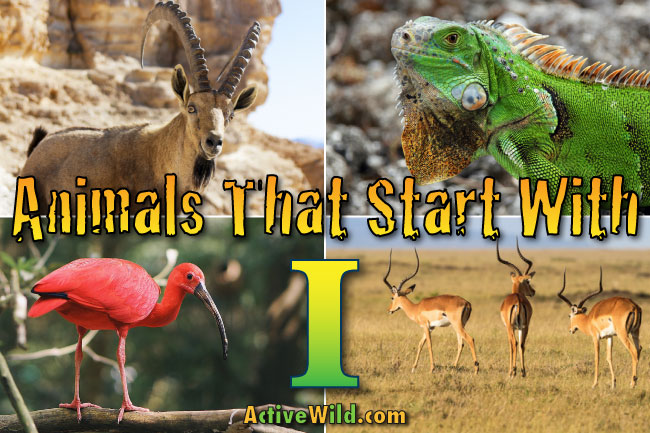
Scroll down to see pictures and facts on all of the animals, or use the index below to go directly to a particular animal.
List Of Animals Beginning With I
- Ibex
- Ibis
- Iceland Gull
- Icterine Warbler
- Iguana (Green)
- Immortal Jellyfish
- Impala
- Indian Bullfrog
- Indian Crested Porcupine
- Indian Elephant
- Indian Flying Fox
- Indian Giant Squirrel
- Indian Grey Mongoose
- Indian Palm Squirrel
- Indian Rhinoceros
- Indian Star Tortoise
- Indigo Snake
- Indo-Chinese Forest Lizard
- Indri
- Inland Taipan
- Iriomote Cat
- Irish Setter
- Irish Wolfhound
- Irukandji Jellyfish
- Italian Wall Lizard
- Italian Wolf
- Ivory Gull
You can find animals beginning with other letters by clicking on the squares below…



























Ibex
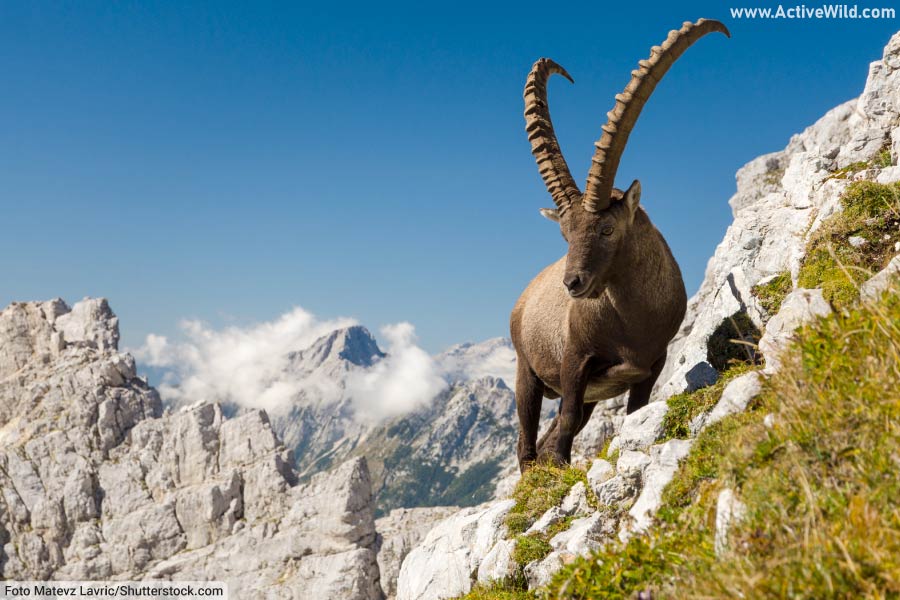
- Type of animal: Mammal
- Family: Bovidae
- Where found: Europe, Asia, Africa
Ibex are wild goats found in the wild in mountainous regions of Europe, the Middle East and East Africa.
Extremely good climbers, ibex can scramble at high speed over rocky terrain. Both male and female ibex have curved, ridged horns, but those of the male are far longer.
Ibex belong to the genus Capra, which is also home to turs, the markhor, and the domestic goat – a species found in farms throughout much of the world.
The genus Capra is part of a larger group of hooved animals, the subfamily Caprinae, whose members are known as “goat-antelopes”. Despite the name, “real” antelopes such as gazelles, wildebeest and impalas, do not belong to this group.
Discover More With Active Wild
You can see more animals with horns on this page: Animals With Horns List with Pictures & Facts
You can find out more about mammals on this page: Mammals - The Ultimate Guide
Ibis

- Type of animal: Bird
- Family: Threskiornithidae
- Where found: All continents except Antarctica
Ibises are wading birds with long, thin legs and long, downward-curving bills. Ibises are found both in the Old World and the New World. Together with the spoonbills, they make up the bird family Threskiornithidae.
The glossy ibis, a species named for its shiny, iridescent plumage, is the widest-ranging ibis species. It is found on all continents except for Antarctica.
Discover More With Active Wild
You can find out more about the different types of birds on this page: Types Of Birds Pictures & Facts
Discover more about birds on this page: Birds - The Ultimate Guide
Iceland Gull

- Scientific name: Larus glaucoides
- Type of animal: Bird
- Family: Laridae
- Where found: The Arctic, Europe, North America
- Conservation status: Least Concern
The Iceland gull is a mid-sized gull that breeds in Greenland and north Canada (but, despite its name, not in Iceland). In the winter it migrates south from its Arctic breeding grounds and can be seen in the UK and in the northern states of the contiguous United States.
Discover More With Active Wild
You can find out more about the different types of birds on this page: Types Of Birds Pictures & Facts
Discover more about birds on this page: Birds - The Ultimate Guide
You can see more Arctic animals on this page: Arctic Animals Pictures & Facts
Icterine Warbler
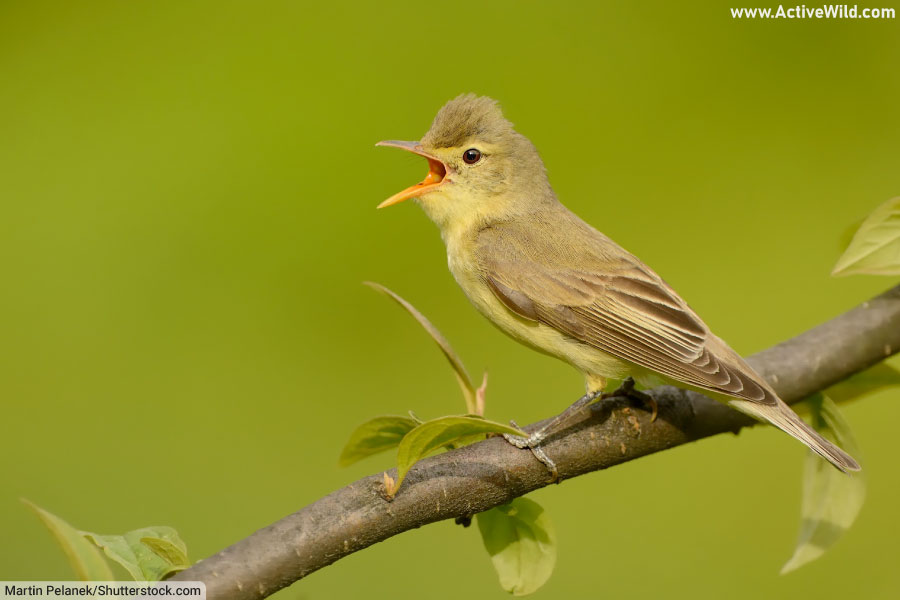
- Scientific name: Hippolais icterina
- Type of animal: Bird
- Family: Acrocephalidae
- Where found: Europe (summer), Africa (winter)
- Conservation status: Least Concern
The Icterine warbler is a small bird that migrates between Europe, where it breeds in the summer, and tropical Africa, where it spends the winter.
Found in forests and woodlands, the icterine warbler builds its nest in the fork or tree branches. During the summer, it adds fruits and berries to its usually insectivorous diet.
The bird is named for its color; the word “icterine” describes a yellowish color.
Discover More With Active Wild
You can find out more about the different types of birds on this page: Types Of Birds Pictures & Facts
Discover more about birds on this page: Birds - The Ultimate Guide
Iguana (Green)
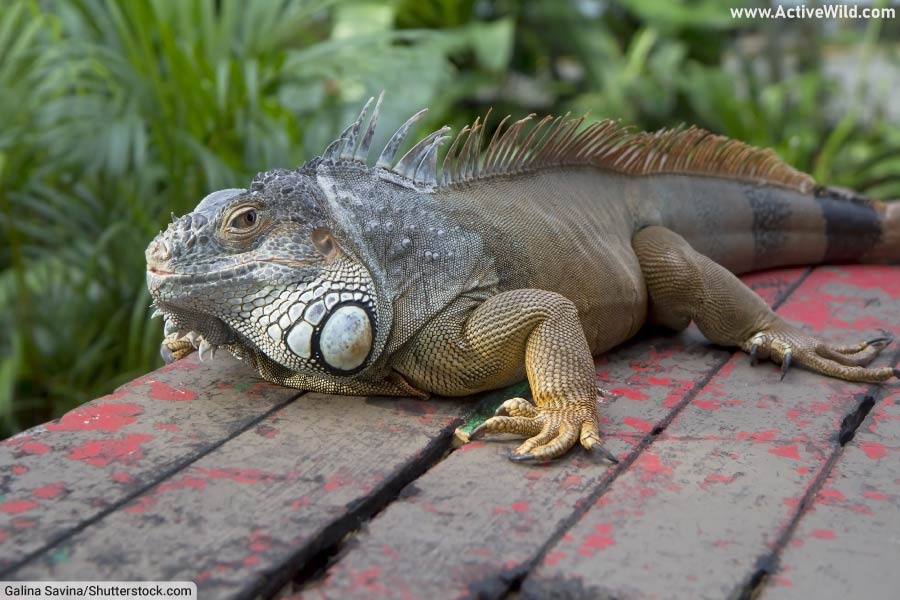
- Scientific name: Iguana iguana
- Type of animal: Reptile
- Family: Iguanidae
- Where found: North America, South America
- Conservation status: Least Concern
The green iguana is a large lizard that lives in forests in Central and South America. The species is commonly called the iguana, with its full name being used to distinguish it from other species in the iguana family, Iguanidae.
The green iguana’s closest relative is the critically endangered Lesser Antillean iguana, a species found on the Lesser Antilles islands in the Caribbean.
Despite its size (the species can reach lengths in excess of 2 m / 6.56 ft.) and fearsome looks, the green iguana is mainly herbivorous. It is an arboreal (tree-dwelling) species, but is also an excellent swimmer. If threatened, it will often dive into a nearby body of water.
Discover More With Active Wild
You can find out more about iguanas on this page: Iguana Facts
Discover more amazing lizards on this page: Types of Lizards
Become a reptile expert: Reptiles - The Ultimate Guide
Immortal Jellyfish

- Scientific name: Turritopsis dohrnii
- Type of animal: Hydrozoan
- Family: Oceaniidae
- Where found: Worldwide in temperate to tropical saltwater
- Conservation status: Unassessed
The immortal jellyfish belongs to Hydrozoa, a group of very small, mainly predatory invertebrate animals that itself is part of a larger group known as Cnidaria, which is home to jellyfish, corals and related animals.
Adult immortal jellyfish are around 2.7 mm / 0.10 in. in height and 3.3 mm / 0.12 in. in diameter and have an omnivorous diet, feeding on plankton, fish eggs and brine shrimp.
This species is deemed “biologically immortal”, which means that unless killed by an outside force (e.g., being eaten), the jellyfish cannot die.
The immortal jellyfish is able to accomplish this through a process called “transdifferentiation”, which allows it to revert to its polyp state if it is old, hurt or starving. Once in its polyp form the jellyfish can regenerate brand new cells that are genetically identical to the old medusa (adult form).
Predators of the immortal jellyfish include sea turtles, anemones, penguins and several kinds of fish.
Discover More With Active Wild
Discover more amazing ocean animals on this page: Ocean Animals
Impala
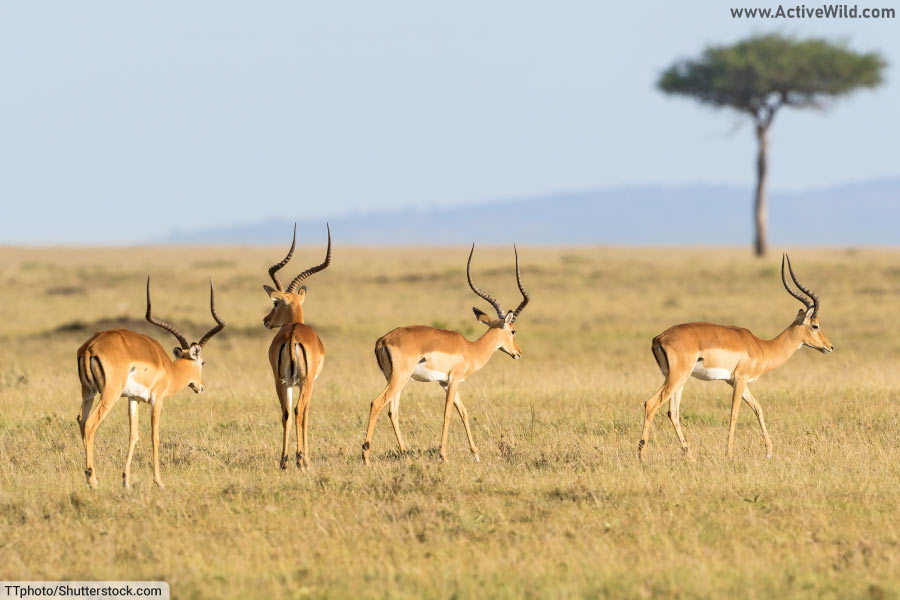
- Scientific name: Aepyceros melampus
- Type of animal: Mammal
- Family: Bovidae
- Where found: Africa
- Conservation status: Least Concern
The impala is a mid-sized antelope found in East and southern Africa. Its coat is reddish-brown, the lower half of its body being slightly paler. Its undersides are white.
The male has long, ridged horns that curve outwards, then inwards and backwards. The horns can reach up to 3 ft / 0.91 m in length.
Predators of the impala include big cats such as lions, leopards and cheetahs. If threatened, an impala often performs a series of energetic leaps, which may serve to confuse a potential predator. An impala can leap distances of up to 10 m / 33 ft in distance, and up to 3 m / 9.84 ft high.
Discover More With Active Wild
You can see more horned animals on this page: Animals With Horns
Discover more African animals on this page: African Animals
Indian Bullfrog

- Scientific name: Hoplobatrachus tigerinus
- Type of animal: Amphibian
- Family: Dicroglossidae
- Where found: South and Southeast Asia (introduced: Maldives and Madagascar)
- Conservation status: Least Concern
With a weight of 272 to 771 grams / 0.6 - 1.7 lbs. and a length of up to 16.8 cm / 6.6 in., the Indian bullfrog is the largest species of frog found in South Asia.
The species’ large size and carnivorous feeding habits make it a voracious predator. It feeds on a wide range of animals, including invertebrates, reptiles, and small birds and mammals.
For most of the year, the Indian bullfrog has a dull coloration consisting of different shades of olive and brownish green that varies slightly among individuals. During the mating season, however, males turn bright yellow to attract females.
An aquatic species, the Indian bullfrog is usually found in natural and artificial freshwater wetlands. It is also present in forested areas and coastal regions
Although currently listed by the IUCN as a species of “least concern”, the Indian bullfrog faces a number of threats, including habitat loss due to drought and infrastructure development, and water pollution caused by pesticides used for agriculture.
Discover More With Active Wild
You can find out more about amphibians on this page: Amphibians - The Ultimate Guide
See more examples of amphibians on this page: List of Amphibians
Indian Crested Porcupine
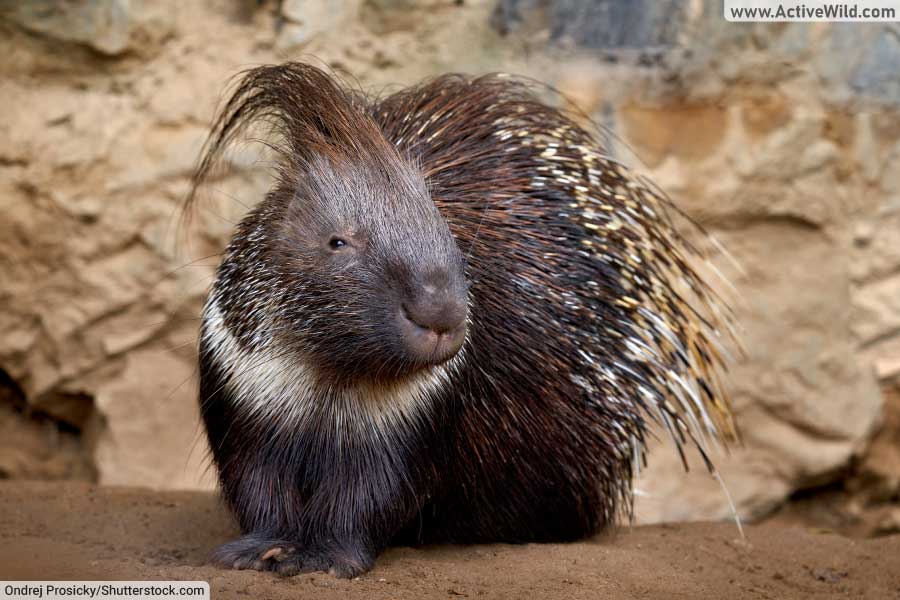
- Scientific name: Hystrix indica
- Type of animal: Mammal
- Family: Hystricidae
- Where found: Asia
- Conservation status: Least Concern
The Indian crested porcupine is a rodent belonging to the family Hystricidae, a group of animals known as the “Old World porcupines”.
Despite sharing several physical similarities (not least their spined coats), Old World porcupines are not closely related to the New World porcupines of family Erethizontidae.
A porcupine’s spines are modified hairs. They are made of a natural substance called keratin. The spines of the Indian crested porcupine are up to 51 cm (20 in) in length.
Nocturnal, and mainly herbivorous (the species will also eat insects), the Indian crested porcupine is found in southern Asia and the Middle East.
Discover More With Active Wild
You can find out more about porcupines on this page: Porcupine Facts
Discover more amazing Asian animals on this page: Asian Animals
Indian Elephant
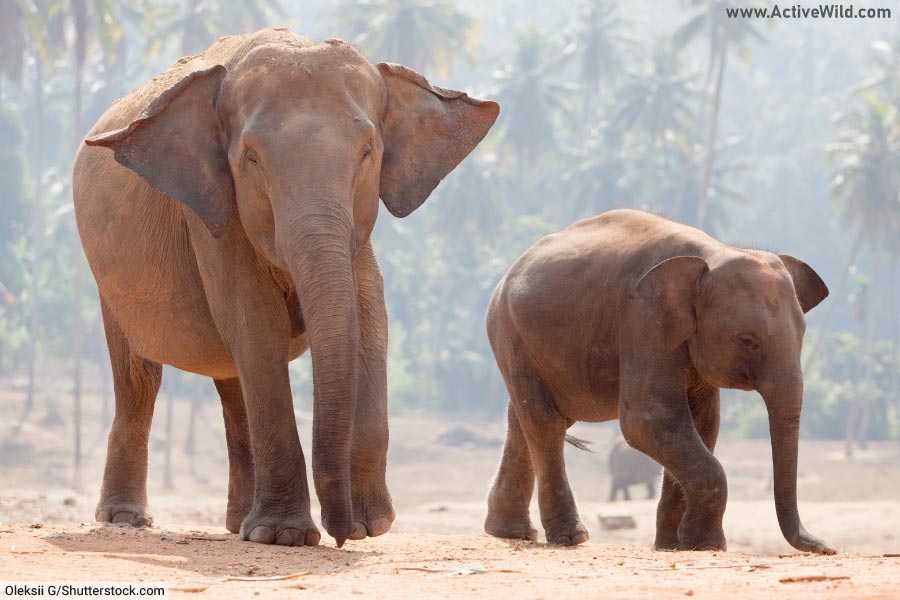
- Scientific name: Elephas maximus indicus
- Type of animal: Mammal
- Family: Elephantidae
- Where found: Asia
- Conservation status: Endangered
The Indian elephant is one of the three subspecies (types) of Asian elephant, and the only one found in mainland Asia. (The Sri Lankan elephant and Sumatran elephant subspecies are found on the islands of Sri Lanka and Sumatra respectively.)
The Indian elephant is found not just in India, but also in several other southern Asian countries, including Vietnam, Thailand and Malaysia.
Despite being an endangered species, the Asian elephant continues to be hunted for its tusks and meat. Habitat loss is another major cause for the species’ decreasing population.
You can find out more about the Indian elephant on this page: Indian Elephant Facts
Discover More With Active Wild
You can find out more about Indian elephants on this page: Indian Elephant Facts
Discover more amazing Asian animals on this page: Asian Animals
Indian Flying Fox

- Scientific name: Pteropus medius
- Type of animal: Mammal
- Family: Pteropodidae
- Where found: India
- Conservation status: Least Concern
The Indian flying fox is India’s largest bat and one of the world’s largest bat species. It has a wingspan of up to 1.5 m / 4.92 ft., and can weigh up to 3.5 pounds / 1.6 kg.
This nocturnal flying mammal lives in tropical forests in India and several other south Asian countries. It feeds on ripe fruits and nectar.
The Indian flying fox belongs to a group of bats known as “megabats”. These mainly fruit-eating bats make up one of two main bat groups, the other being the insect-eating “microbats”.
Discover More With Active Wild
You can find out more about bats on this page: Bats - The Ultimate Guide
You can find out about the different types of mammals on this page: Types Of Mammals
Discover more amazing Asian animals on this page: Asian Animals
Indian Giant Squirrel

- Scientific name: Ratufa indica
- Type of animal: Mammal
- Family: Sciuridae
- Where found: Peninsular India
- Conservation status: Least Concern
The Indian giant squirrel, also known as the “Malabar giant squirrel”, is endemic to peninsular India, where it is widespread, due to its ability to thrive in a variety of different habitat types.
This giant tree-dwelling rodent weighs around 2 kg / 4.4 lb. when mature, and has an average head to tail length of 80 cm / 2.6 feet. The tail makes up about two-thirds of the squirrel’s length, and helps with balance.
If you compare the above stats with those of the eastern grey squirrel of North America (and Great Britain), which weighs up to 600g / 1.32 lb. and has a nose-tail length of up to 55 cm / 1.8 ft., you’ll begin to get an idea just how big the Indian giant squirrel is!
The Indian giant squirrel spends almost all of its time in the upper canopy. It is an impressive climber, and is capable of leaping 6 m / 20 feet!
The species is diurnal (active during the day) and omnivorous, feeding on seeds, nuts, flowers, tree bark, fruits, eggs and insects. Due to its diet, the Indian giant squirrel plays an important role in its ecosystem as a seed disperser.
Discover More With Active Wild
You can find out about the different types of mammals on this page: Types Of Mammals
Discover more amazing Asian animals on this page: Asian Animals
Indian Grey Mongoose
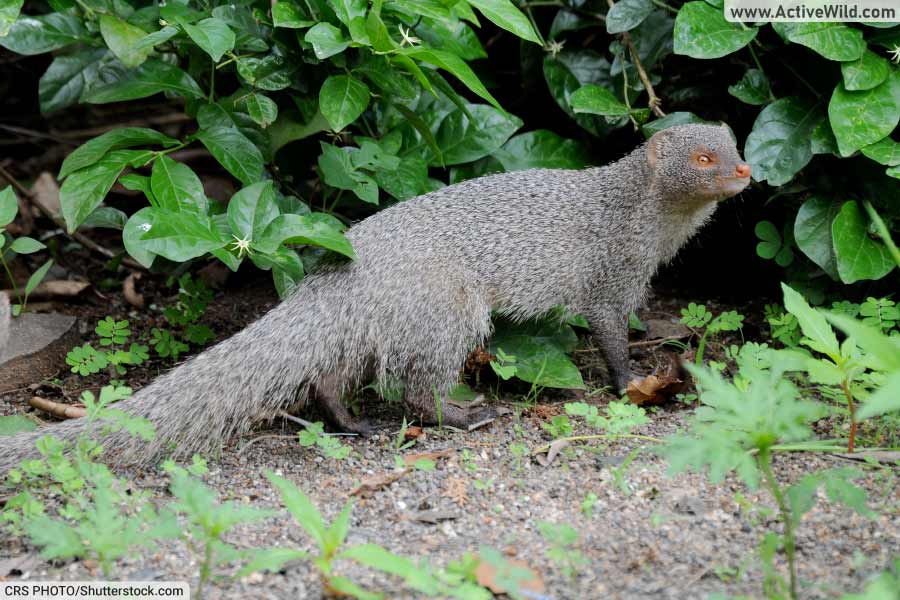
- Scientific name: Urva edwardsii
- Type of animal: Mammal
- Family: Herpestidae
- Where found: Asia
- Conservation status: Least Concern
The Indian grey mongoose is a small predatory mammal found in forests, shrublands and grasslands in southern Asia and parts of the Middle East. It is one of 33 species of mongoose, which together make up the family Herpestidae.
The Indian grey mongoose preys on small vertebrates such as rodents and snakes, and also eats the eggs of both birds and reptiles.
In Rudyard Kipling’s The Jungle Book, Rikki-Tikki-Tavi is an Indian grey mongoose who protects a human family from cobras.
Discover More With Active Wild
You can find out about the different types of mammals on this page: Types Of Mammals
Discover more amazing Asian animals on this page: Asian Animals
Indian Palm Squirrel

- Scientific name: Funambulus palmarum
- Type of animal: Mammal
- Family: Sciuridae
- Where found: Southern India and Sri Lanka
- Conservation status: Least Concern
The Indian palm squirrel, also known as the three-striped palm squirrel, is a tree squirrel native to India and Sri Lanka.
Predators of the Indian palm squirrel include, but are not limited to, birds of prey, wild cats, reptiles and even domestic dogs and cats.
Though not exclusive to palm squirrels, they possess an amazing adaptation that allows them to rotate their ankles 180 degrees. This allows them to run down trees face down improving their chances of success while escaping from predators.
Indian palm squirrels do not face any major threats right now as they are highly adaptable making their homes not only in forests but also in urban settings.
Indian palm squirrels are small rodents weighing 100 - 120 grams / 3.5 - 4.2 oz but even with their small size they are known to kill and eat small chicks whenever they make their way into a farm.
Discover More With Active Wild
You can find out about the different types of mammals on this page: Types Of Mammals
Discover more amazing Asian animals on this page: Asian Animals
Indian Rhinoceros
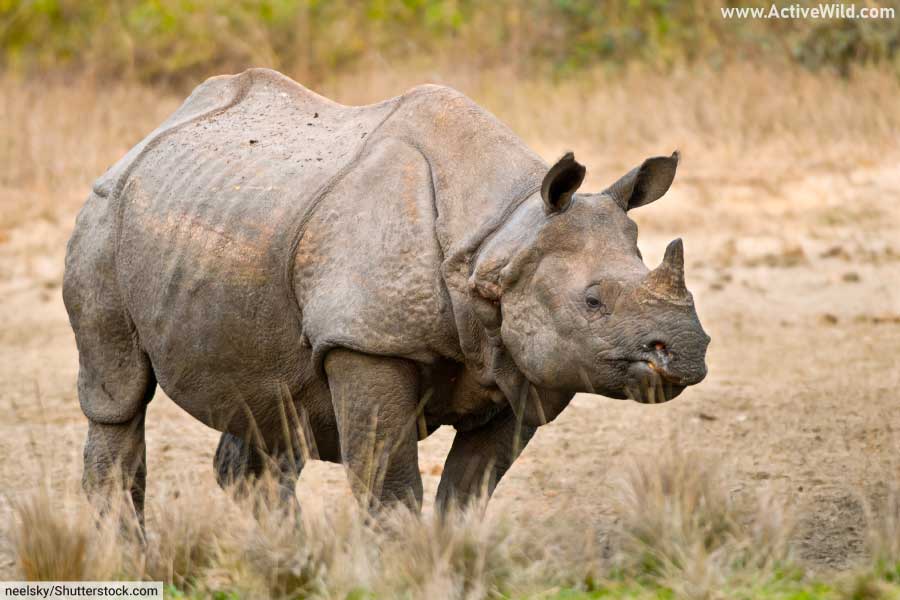
- Scientific name: Rhinoceros unicornis
- Type of animal: Mammal
- Family: Rhinocerotidae
- Where found: India and Nepal
- Conservation status: Vulnerable
Also known as the greater one horned rhinoceros, the Indian rhino is the largest of the three rhino species found in Asia. Mature adults can weigh 2,200 - 3,000 kgs / 4,900 - 6,600 lbs. with little or no size difference between males and females.
The Indian rhino is herbivorous, feeding primarily on grass, leaves, fruits and berries. They exhibit crepuscular eating habits preferring to graze in the early morning and early evening, and spending the day resting and wallowing in lakes and rivers.
Once present in Bangladesh and Bhutan, the Indian rhino is now extinct there, mostly due to poaching as their biggest threat is humans. The Indian rhino has been hunted to the brink of extinction because of the illegal trade of its horn, which is believed to have medicinal properties in different Asian and African countries.
Discover More With Active Wild
You can find out more about rhinos on this page: Rhino Facts
Rhinos have horns, but are they "real" horns? Find out on this page: Animals With Horns
Indian Star Tortoise
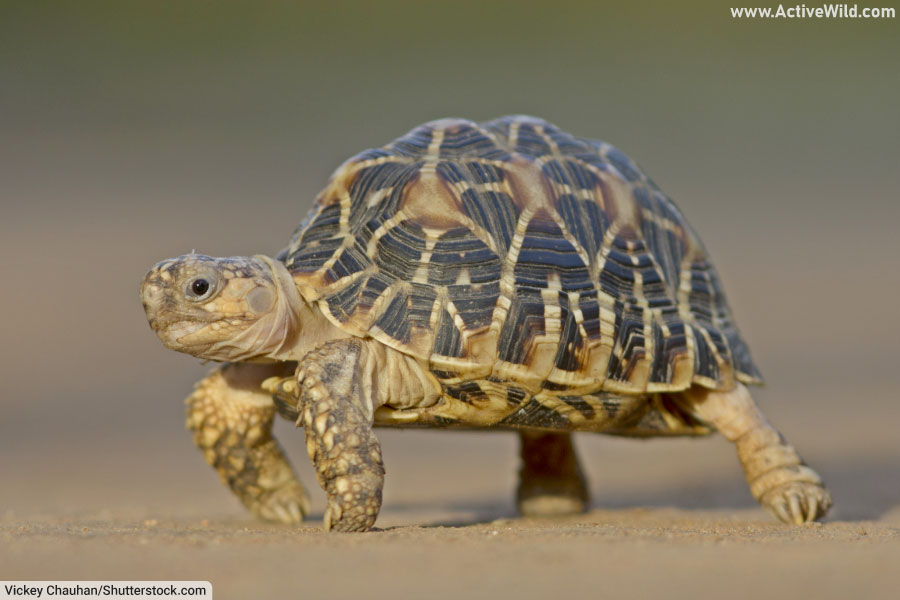
- Scientific name: Geochelone elegans
- Type of animal: Reptile
- Family: Testudinidae
- Where found: India, Pakistan and Sri Lanka
- Conservation status: Vulnerable
The Indian star tortoise displays crepuscular habits during the warmer months when it is active primarily during the early morning and late afternoon. Meanwhile, during the rainy season they are very active for most of the day.
This species is usually herbivore but are known to be opportunistic feeders eating carrion and smaller animals when given the chance. The Indian star tortoise can also go long periods of time without food, during which their activity level reduces significantly.
A single female can lay up to 9 clutches of eggs in one year, each having anywhere between 1 - 10 eggs. Females become sexually mature in 8 - 12 years, while it takes males 6 - 8.
Males are smaller than females with their carapace being 15 - 20 cm / 6 - 8 in. long, while the female carapace has a length of 25 - 30 cm / 10 - 12 in.
Discover More With Active Wild
Discover more amazing turtles on this page: Types of Turtles
See more North American reptiles on this page: American Reptiles List with Pictures
Become a reptile expert: Reptiles - The Ultimate Guide
Indigo Snake

- Type of animal: Reptile
- Family: Colubridae
- Where found: North America, South America
Indigo snakes are large, non-venomous snakes found in the Americas. The five species of indigo snake make up the genus Drymarchon, which is part of the family Colubridae (the largest snake family).
The eastern indigo snake, which is found in the southeastern United States, is the country’s longest native snake. This mostly black snake reaches a maximum recorded length of 2.8 m (9.2 ft). It competes for the title of “largest snake of the United States” with the Eastern diamondback rattlesnake, whose maximum weight may be slightly greater.
Discover More With Active Wild
Discover more amazing snakes on this page: Types of Snakes
See more North American reptiles on this page: American Reptiles List with Pictures
Become a reptile expert: Reptiles - The Ultimate Guide
Indo-Chinese Forest Lizard
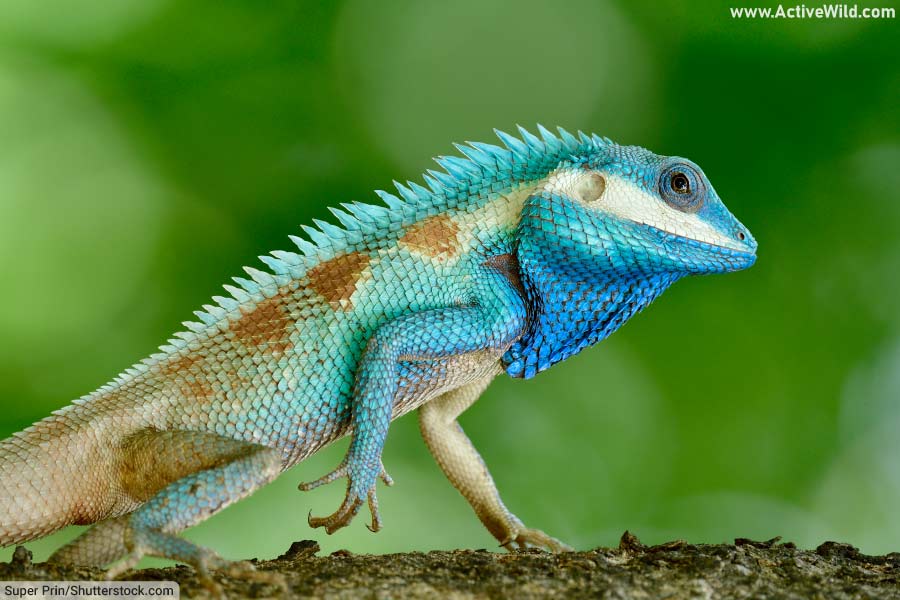
- Scientific name: Calotes mystaceus
- Type of animal: Reptile
- Family: Agamidae
- Where found: Asia
- Conservation status: Least Concern
The Indo-Chinese forest lizard is a mid-sized lizard in the family Agamidae. It grows to around 42 cm (16.5 in) in length. A strikingly-colored species, its head and front half of its body are turquoise, while the rear half of its body and its tail are pale yellow-brown.
The Indo-Chinese forest lizard’s natural habitat is forests, but today the species is also found in suburban areas. It is arboreal (tree-dwelling) and insectivorous (insect-eating).
Discover More With Active Wild
Discover more amazing lizards on this page: Types of Lizards
Become a reptile expert: Reptiles - The Ultimate Guide
Discover more amazing Asian animals on this page: Asian Animals
Indri
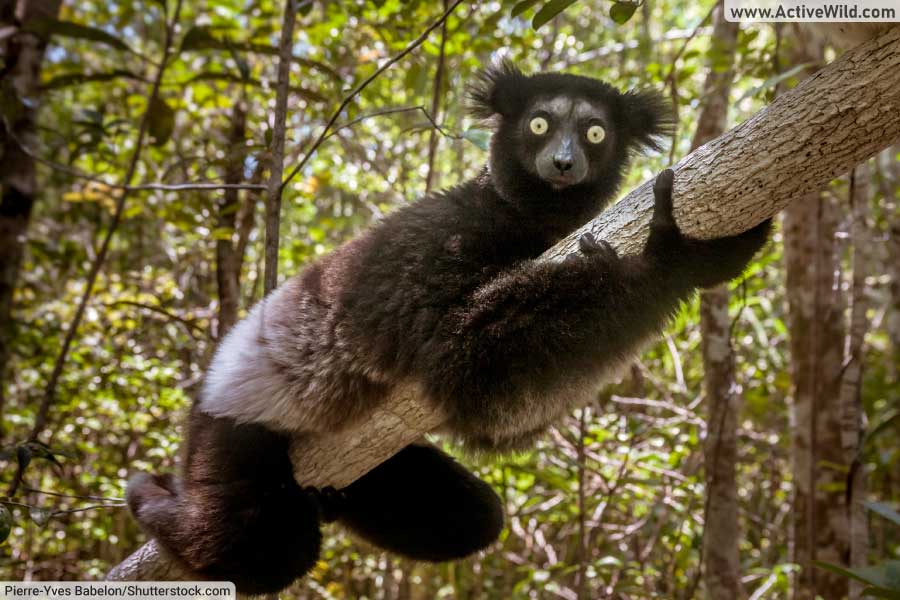
- Scientific name: Indri indri
- Type of animal: Mammal
- Family: Indriidae
- Where found: Africa (Madagascar)
- Conservation status: Critically Endangered
The indri is the world’s largest lemur.
Lemurs are a group of around 100 species of primate which evolved independently of other primates on the island of Madagascar. Lemurs, including the indri, only found on Madagascar, which lies in the Indian Ocean off the southeast coast of Africa.
The indri keeps is body vertical while leaping through the trees, giving it a human-like appearance. A critically endangered species, the indri is threatened primarily by deforestation. Despite its endangered status, the species is also hunted by locals for food.
Discover More With Active Wild
Become a primate expert: Primates - The Ultimate Guide
You can see more critically endangered species on this page: Critically Endangered Species List with Pictures
Inland Taipan
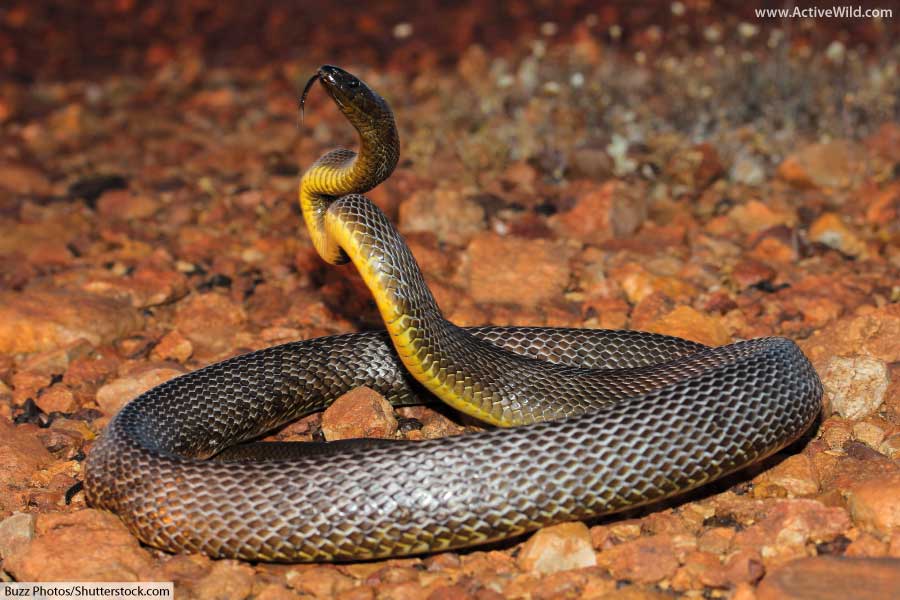
- Scientific name: Oxyuranus microlepidotus
- Type of animal: Reptile
- Family: Elapidae
- Where found: Australia
- Conservation status: Least Concern
The inland taipan is a large snake found in the deserts of central Australia. It is the world’s most venomous snake; the venom discharged in a single bite from an inland taipan is enough to kill 100 humans.
Fortunately, the species is generally not aggressive and found in areas unfrequented by humans. (The closely-related coastal taipan, despite being slightly less venomous, is highly aggressive and considered far more dangerous.)
Discover More With Active Wild
You can find out more about the inland taipan on this page: Inland Taipan Facts
Discover more amazing snakes on this page: Types of Snakes
See more Australian animals on this page: Australian Animals List with Pictures
Become a reptile expert: Reptiles - The Ultimate Guide
Iriomote Cat
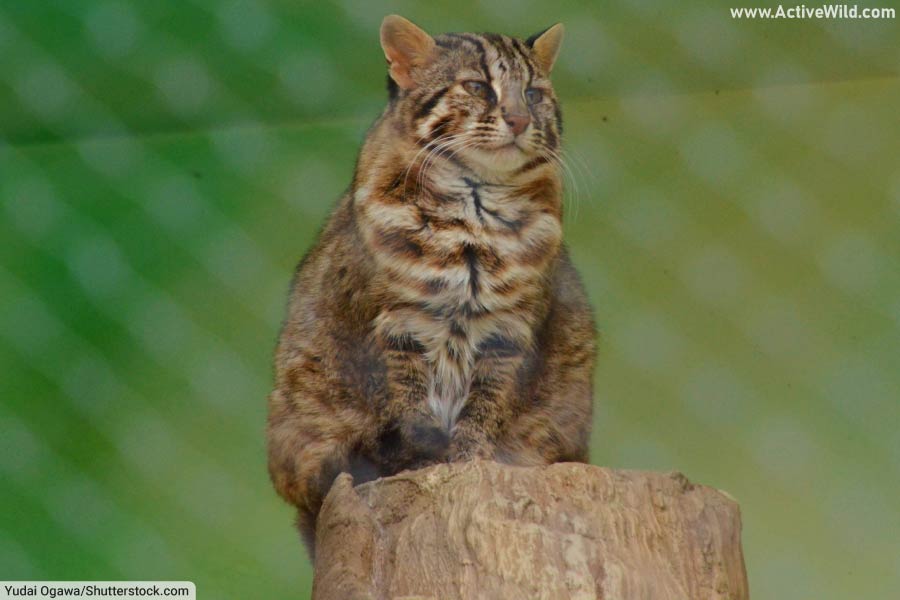
- Scientific name: Prionailurus bengalensis iriomotensis
- Type of animal: Mammal
- Family: Felidae
- Where found: Japan
- Conservation status: Critically Endangered
The Iriomote cat is a subspecies of leopard cat found only on the 284 sq. km / 109.7 sq. mile Japanese island, Iriomote.
Although the leopard cat itself is not currently threatened, the Iriomote subspecies has an estimated population of just 100 adult individuals, and is critically endangered.
This rare felid is solitary for most of the year. During the breeding season it exhibits “serial monogamy”, mating with only one partner each season.
Female Iriomote cats normally give birth to just one kitten, rarely twins. There are no reports of a litter ever exceeding two individuals. The mother takes sole care of the kittens, which become independent at 4.5 months.
Threats faced by the Iriomote cat include habitat loss, traffic accidents and inbreeding.
Discover More With Active Wild
You can see every cat species on this page: Wild Cat Species with Pictures
Discover more amazing Asian animals on this page: Asian Animals
Irish Setter

- Scientific name: Canis familiaris / Canis lupus familiaris
- Type of animal: Mammal
- Family: Canidae
- Conservation status: Domestic
The Irish setter is a breed of domestic dog also known as the red setter, on behalf of its long red-brown hair. It was originally bred in Ireland as a gun dog.
A mid-sized to large breed, the Irish setter is highly energetic and requires a large amount of exercise and mental stimulation. Although affectionate and not naturally aggressive, the Irish setter may not be the best breed for a young family.
Discover More With Active Wild
You can find out more about dogs on this page: Dog Facts
You can find out more about wolves on this page: Wolf Facts
Discover every species in the dog family on this page: Dog Species List with Pictures
Irish Wolfhound

- Scientific name: Canis familiaris / Canis lupus familiaris
- Type of animal: Mammal
- Family: Canidae
- Conservation status: Domestic
The Irish wolfhound is one of the largest dog breeds; large males can reach heights of almost 3 ft / 0.91 m at the withers.
The Irish wolfhound was originally bred as a hunting dog. It is a sighthound – a dog that hunts by sight rather than by scent.
Despite being an intelligent and rarely-aggressive breed, the sheer size and strength of an Irish wolfhound make it unsuitable for most families.
Discover More With Active Wild
You can find out more about dogs on this page: Dog Facts
You can find out more about wolves on this page: Wolf Facts
Discover every species in the dog family on this page: Dog Species List with Pictures
Irukandji Jellyfish
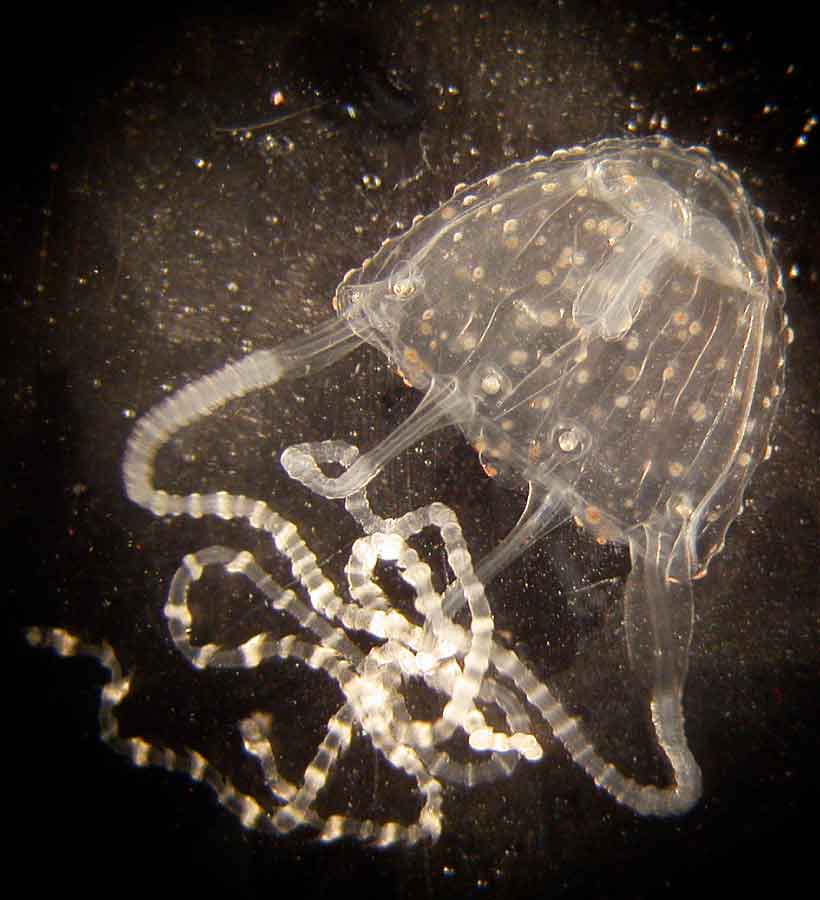
- Scientific name: Carukia barnesi
- Type of animal: Cubozoan
- Family: Tamoyidae
- Where found: Australia
- Conservation status: Unassessed
Irukandji Jellyfish are small box jellyfish found in the oceans north of Australia. These colorless invertebrate animals are around 2.4 cm / 0.9 in. in diameter, and have tentacles up to 1 m / 3.3 ft. in length.
Irukandji jellyfish are among the most venomous of all jellyfish. A sting can cause excruciating pain, and may require hospitalization. The effects can last from hours to days. This same venom is used by the jellyfish to hunt their prey.
Reproduction of the Irukandji jellyfish has never been recorded, but it is presumed to take place in the same way as in other cubozoan species. Adult individuals of both sexes release sperm and eggs into the ocean, where fertilization takes place.
Discover More With Active Wild
Discover more amazing ocean animals on this page: Ocean Animals
Italian Wall Lizard

- Scientific name: Podarcis siculus
- Type of animal: Reptile
- Family: Lacertidae
- Where found: Europe (native); North America (introduced)
- Conservation status: Least Concern
The Italian wall lizard is a species of lizard found in Italy and several other European countries. It has also been introduced to North America and Spain. In Spain it is considered an invasive species as it outcompetes native lizards.
The Italian wall lizard is studied by scientists researching rapid evolution. In the 1970’s a small number of Italian wall lizards was introduced to an island in the Adriatic sea. In the space of just twenty years the population was found to be both larger in size, and to have shorter hind legs (as well as a number of other differences) than the original specimens.
Discover More With Active Wild
Discover more amazing lizards on this page: Types of Lizards
Become a reptile expert: Reptiles - The Ultimate Guide
Italian Wolf
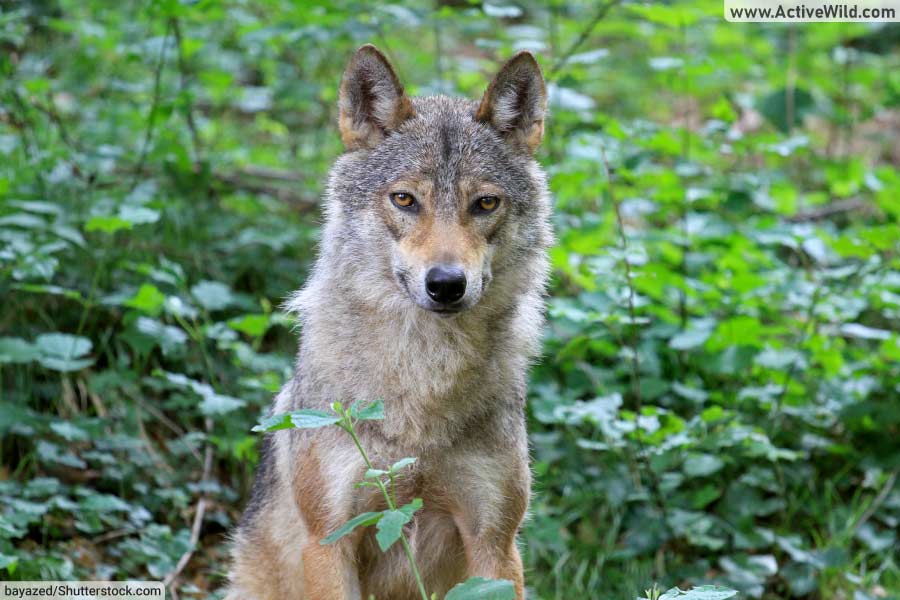
- Scientific name: Canis lupus italicus
- Type of animal: Mammal
- Family: Canidae
- Where found: Italy, Switzerland and France
- Conservation status: (Canis lupus: Least Concern)
The Italian wolf is a European subspecies of grey wolf (Canis lupus) and has not been officially recognized as a distinct species. It has an average weight of 25 - 35 kg / 55 - 77 lbs. and a body length of 110 - 147 cm / 43 - 58 in., with males being slightly larger than females.
Due to the shortage of larger prey animals in their geographic range, Italian wolf packs tend to be small, normally consisting only of a breeding pair and their still dependent offspring. (Grey wolf packs elsewhere contain around seven individuals, allowing them to take down large prey such as deer.)
The Italian wolf population comprises between 500 and 600 individuals, and is believed to be growing at a rate of 7% per year.
Discover More With Active Wild
You can find out more about wolves on this page: Wolf Facts
Discover every species in the dog family on this page: Dog Species List with Pictures
Ivory Gull
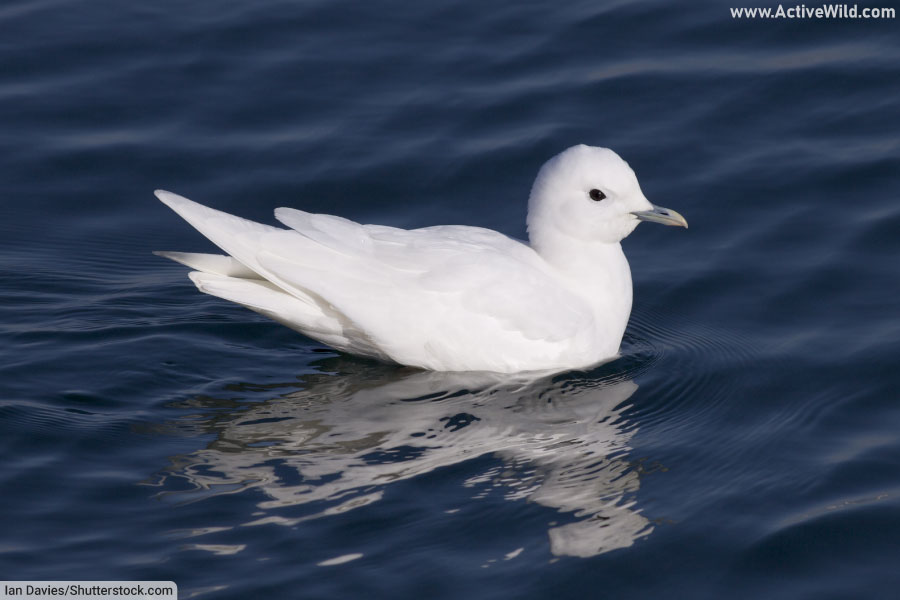
- Scientific name: Pagophila eburnea
- Type of animal: Bird
- Family: Laridae
- Where found: The Arctic, Subarctic
- Conservation status: Near Threatened
The ivory gull is a small gull that breeds in the Arctic and is found further south during the winter. Adults have pure white plumage, black legs, and grey bills tipped with yellow.
The ivory gull has a varied diet that includes fish and crabs. It will also scavenge, and is known to follow polar bears to feed on any scraps they may leave behind.
The ivory gull is the only member of genus Pagophila, and one of around 100 species in the gull family, Laridae.
Discover More With Active Wild
You can find out more about the different types of birds on this page: Types Of Birds Pictures & Facts
Discover more about birds on this page: Birds - The Ultimate Guide
Animals That Start With I: Conclusion
We hope that you’ve discovered some interesting animals with names beginning with I on this page.
You can discover more animals in our A to Z animals section by clicking on the letters below…




























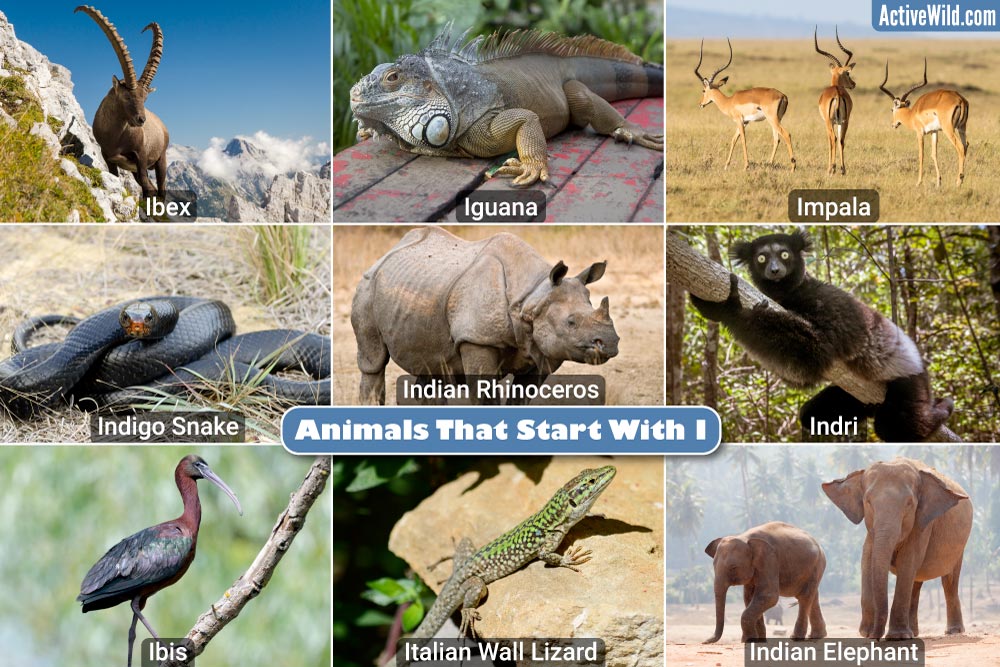
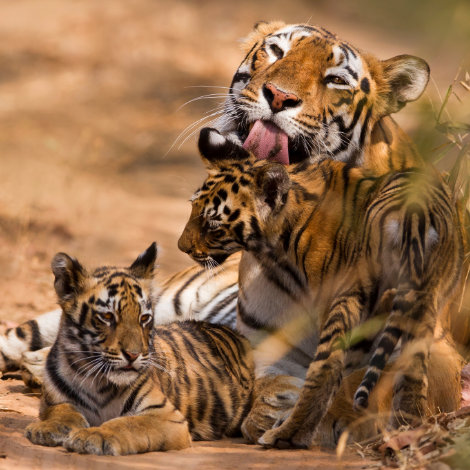
I like the Indri!
Indris are awesome! 🙂
i like the ibex already and i’ve never even met one